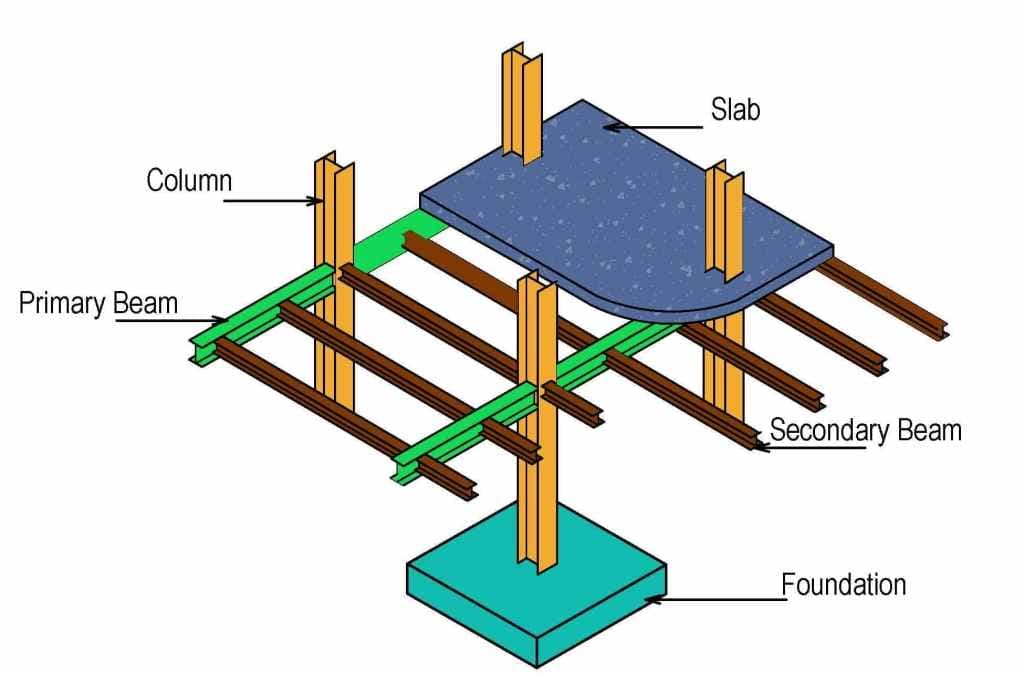
Both Beam and Column are load carrying structural members. However the difference lies in the way, they carry the load in a Structural System.

Beam
Column
01
- Generally a horizontal member of a structure that resists transverse load is called beam.
- Generally a vertical member of a structure that resists axial/eccentric load is called column.
02.
- It carries load perpendicular to longitudinal axis.
- It carries load parallel to longitudinal axis.
03.
- It basically carries or resists bending and shear force.
- It basically carries or resists compression load.


- Its shape can be square, rectangular, T shape, I shape, H shape.
- Its shape can be rectangular, circular, square, T shape, L shape, C shape, elliptical etc.
- It carries weight of slabs, ceiling, floor, roof of a building and transfers it to columns.
- It carries load transferred by beam and ultimately transfer it to footing and ground.
04.
- Minimum steel required in RCC beam as per its cross sectional as per
(a) Indian Standard – 0.259 %.
(b) American Standard – 0.323 %
(c) British Standard – 0.24 %
- Minimum steel required in RCC Column of its cross sectional as per
(a) Indian Standard – 0.80 %.
(b) American Standard – 1.0 %
(c) British Standard – 0.40 %
05.
- Maximum steel allowed in RCC beam of its cross sectional as per
(a) Indian Standard – 2.5 %.
(b) American Standard – 5 %
(c) British Standard – 4 %
- Maximum steel allowed in RCC Column of its cross sectional as per
(a) Indian Standard – 6.0 %.
(b) American Standard – 8.0 %
(c) British Standard – 6.0 %
06.
- Minimum width of beam required is 200 mm.
- Minimum width of column required is 200 mm, however for earthquake resistance it should be 300mm.
07.
- Longitudinal steel in RCC Beam is on two faces which is used to resist bending moment while the vertical loads are resisted by stirrups or inclined beam.
- Longitudinal steel in RCC Column is on all faces which basically resists compression.
08.
- A building can be made without Beam.
- A building cannot be made without Column.
09.
- Generally casted with slab and hence greater care is observed for its concreting and curing in case of RCC structures.
- Generally casted in small batches and hence quality of concreting as well as curing ignored in case of RCC structures.
10.
- The failure of beam will not happen suddenly. Depending upon the reason for its failure, will give warning in form of deflection, cracking and one can tackle its failure or will get some time to tackle the failure.
- The failure for column sometimes does not give adequate warning and may happen suddenly, and may lead to collapse of the entire structure and hence column are very important element and no compromise should be made in its design, size, reinforcement, quality of concrete, curing etc.


































